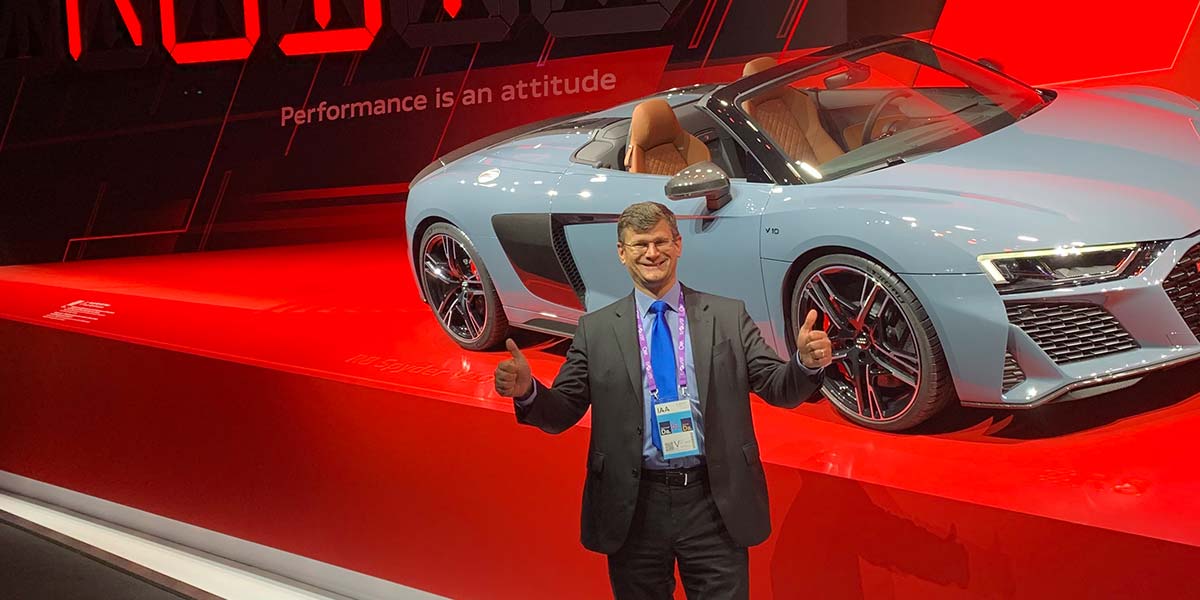EASCY does it – the automotive trends shaping the future
Electric, autonomous, shared, connected, and yearly updated (EASCY), some of the features that industry analysts associate with the car of the future. While some of these trends are already evident today, others will take significantly longer to cement their place on our roads. Here we talk to Rüdiger Scheel, VP of Automotive at Murata, to find out how Murata’s automotive business has navigated the challenges of 2020 and how it can support the trends shaping the sector.

Focusing on expansion
Having joined Murata back in 1997 as a sales engineer, Rüdiger Scheel has a long history with the company. VP of Automotive since April 2019, he has been working with the automotive group for the best part of the last ten years.
While 2020 was a year marked by the Covid-19 pandemic, Murata’s automotive business saw it take a more positive turn towards the end:
“There was an initial dip in sales in the spring, and we wondered if we should put some activities on hold because of all the uncertainty. However, by August, our business was growing again, and we achieved new record sales three months in a row. This reflects the fact that the amount of electronics in cars is increasing, driven by technologies such as electrification and driver assistance, even if car production itself is declining. That’s why we carried on with our recruitment and expansion strategy, as we expect these trends to continue to be emphasized in the future. “
While the demand for Murata’s components persisted during the pandemic, the company had to rethink how it worked with its customers:
“Our strength is our strong technical background: our components are mostly inexpensive, but they are also crucial. To reach new and existing customers, we are constantly fostering dialogue with car manufacturers and seeking out new companies and start-ups that would benefit from our support. Typically, these contacts are found in conferences, but this year has made it more challenging. Virtual meetings do have benefits, but in the end, trust is not built over the internet but by spending time face to face with customers”.
Automotive trends
It is already evident that the mobility behaviour of car users is evolving, with EASCY driving the change. Still, there are several challenges that need to be resolved to fully leverage these features:
“Some of the EASCY features are already there. For example, yearly updates are enabled by the increasing connectivity, with most new cars already permanently connected to the car manufacturer’s data centres. Electrification is also on the rise, but autonomous vehicles are still years away. While the use-case might already exist for public transport and commercial vehicles (e.g. taxi and trucks), it is likely to take much longer for private vehicles.”
According to Rüdiger, when it comes to car sharing, the widespread introduction is held back by the consumer mindset more than the lack of suitable technology:
“Many people from my generation still prefer to own their cars, as this is what they are used to, but perhaps our children will think differently. In any case, the change will be gradual, starting with bigger cities: in rural locations, the conditions for it might never exist.”
Reimagining the driving experience
The change in mindset will also shape the user experience as EASCY technologies become more normalized:
“I’ve heard it said that driving an autonomous car for the first time is great, the second time ok, and then it becomes boring. The question here is how can we continue to make the time spent in the car enjoyable and meaningful? Today, consumers buy a car for many attributes, such as a sporty design. However, with an autonomous car, will we still attach similar emotions to it and care about features like the design? These are some of the questions the industry will have to resolve to successfully realise the promise of the technologies.”
Enabling the future
So, where does Murata fit in this vision for the future?
“We play a key role in connecting the car with telecommunications products and modules. Murata is a market leader in this area. Our components are in every smartphone and, essentially, a modern connected car is a smartphone on wheels.” Murata is also committed to helping automotive manufacturers achieve their goal of three zero operation: zero emissions, zero accidents, and zero time wasted in congestion: “Murata does not drive this vision, but we do our best to support it through the best possible components that are affordable. What we want is for everyone to be able to afford to own the safest and most economical, connected cars possible.”
To find out more about Murata’s offering for the automotive sector, visit https://www.murata.com/en-eu/apps/auto
